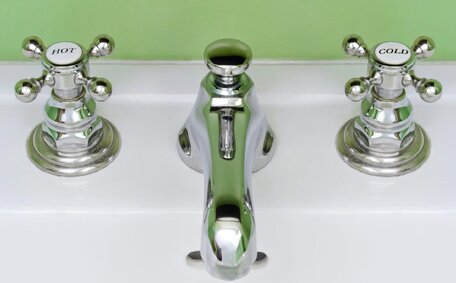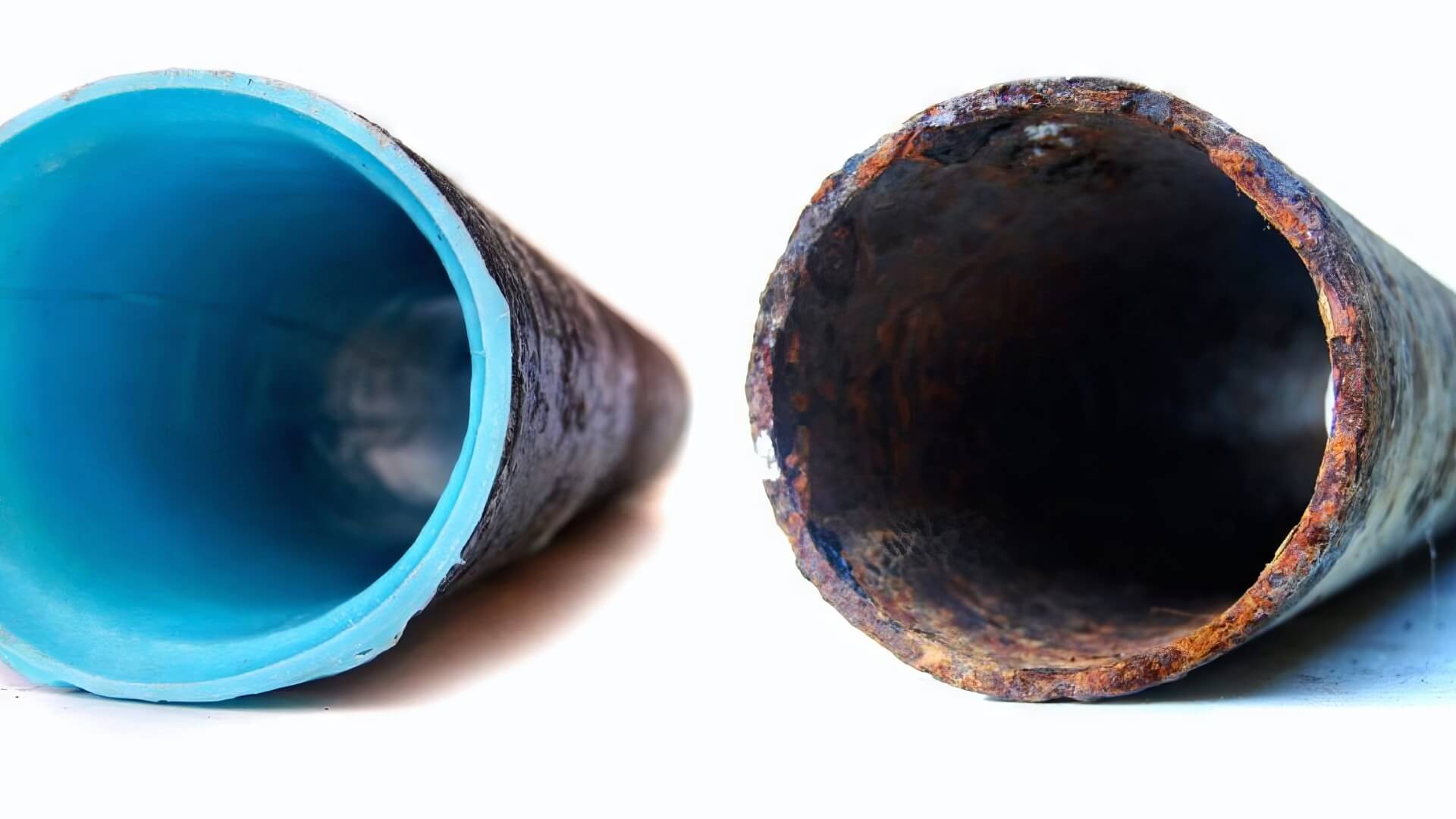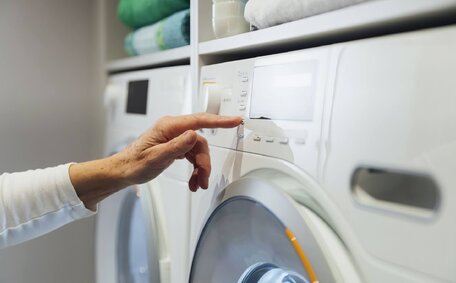Understanding Hot Water System Thermostats
A thermostat in a hot water system regulates the water temperature by controlling the heating element. It works by interrupting the power supply to the heating element to maintain the set temperature.
Modern electric water heaters typically feature two heating elements, each regulated by its own thermostat. The upper thermostat controls the upper element, while the lower one manages the bottom element. This dual setup improves efficiency by heating the water evenly throughout the tank.
For troubleshooting hot water system problems, it’s critical to know how to test thermostats. A malfunctioning thermostat or limit switch that fails to cut power can cause overheating and subsequent system damage. Properly probing the heating elements will help assess the thermostat’s function and whether it needs replacing.
To thoroughly test a hot water system’s thermostat with a multimeter, ensure it can verify continuity between terminals. A reading close to zero Ohms indicates a closed circuit, suggesting the thermostat is operational. A resistance significantly higher than zero Ohms signifies an open circuit, indicating a potentially defective thermostat.
Identifying a Faulty Hot Water Thermostat
There are a few key signs that can indicate your top tank thermostat is faulty:
- Inconsistent water temperatures could suggest a malfunctioning thermostat. If temperature fluctuations occur despite constant water usage, the thermostat might not be effectively regulating the temperature.
- No hot water despite water heaters two working could indicate an issue with gas electric hot water systems in your electric water heater - If just one element in your electric water heating elements tests fine but there’s a need to check out the water heater thermostat to ensure it’s sending power to the elements correctly.
- If the thermostat doesn’t emit a click when engaging, it may indicate stuck contacts.
Evaluating components diligently is essential to keep your water heater operating correctly, letting you diagnose any thermostat issues, as an overheating system can present safety issues. If malfunctions suspicions arise regarding your thermostat, it’s time to closely examine the matter and potentially consult with experts like Hunters Hill Plumbing.
Tools and Safety for Testing a Hot Water Thermostat
To accurately test a hot water system thermostat, you’ll need the appropriate instruments:
- A digital multimeter set to test electrical current
- Flathead and insulated screwdrivers to remove access panels and insulation
- A voltage tester to check for live electrical current during the testing process
- Thermal gloves and eye protection to safeguard against potential hazards
Safety should be your top priority when testing your water heater, especially while handling electrical components in proximity to water:
- Power water heater down at the circuit breaker before starting work
- Use a non-contact voltage tester to ensure the power wires leading to the thermostat are de-energised
- Wear insulated gloves and safety goggles in case of electric shock
- Have a fire extinguisher accessible within one metre’s reach
- Ensure the power is off and exercise caution when using a ladder to access the thermostat
Follow these directives to ensure there no power disruptions occur during water heater element testing, providing protection against electric shock. Take steps to completely isolate power, then proceed with caution. Call in a professional like Hunters Hill Plumbing if unsure about safely accessing thermostat wiring.
Testing Electrical Continuity and Voltage
Adhere and follow these steps for heater element testing and to assess electrical continuity and voltage of your hot water system’s thermostat using a digital multimeter:
- Ensure there’s no power to the water heater by turning it off at the circuit breaker and verifying it’s de-energised using a reliable non-contact voltage tester.
- For a deep dive, test your water heater after removing the thermostat’s plastic cover and insulation to access the wiring terminals.
- Your multimeter should be set to the Ohms setting, and use the meter probe to test your electric water heater, usually indicated by the Greek omega symbol.
- Connect one probe of the multimeter to terminal 1 on the thermostat and the other to the common terminal.
- Expect a zero Ohms reading which indicates a closed circuit with no short, affirming that continuity is present.
- If the reading is high, attach the second lead and repeat the test on the other thermostat terminal.
- A properly functioning thermostat will demonstrate continuity on at least one terminal.
- For voltage checks, set the multimeter to AC Volts, make contact with a probe on each thermostat terminal with power on, and anticipate a reading from 120 to 240V.
Interpreting Multimeter Readings
Understanding how test a hot water system thermostat with a multimeter helps indicate whether the thermostat is working properly or faulty:
- A zero-ohm reading signifies continuity, indicating the thermostat contacts are closed and the unit is operational.
- A high resistance reading suggests open contacts and a potentially defective thermostat.
- No continuity on either thermostat terminal points to a defective thermostat that needs replacing.
- A 120-240V reading across the terminals with power on confirms the voltage is within the normal range.
- No voltage at the thermostat terminals when power is on likely means a wiring issue is preventing power from reaching the thermostat.
Troubleshooting Common Thermostat Issues
Some common thermostat issues in hot water systems include:
Tripped Reset Button
If your gas water heaters’ thermostat has a trip reset option, it might have been activated, severing power to the heating element. Press the red reset button, often resembling a probe, to shut down the system.
Misaligned or Stuck Contacts
Over time, vibration or a corroded anode rod can cause the thermostat’s electrical contacts to become misaligned or stuck.
This prevents your first switch from opening or closing properly. Gently tap the thermostat to help realign any misaligned contacts.
Faulty Wiring
Loose, damaged, or deteriorated wiring leading to the thermostat can cause functionality issues. Scrutinise the thermostat its wires, checking for breaks, corrosion, overheating signs, and secure connections. Repair or replace wiring as needed.
If basic troubleshooting doesn’t solve your thermostat issues, consider contacting professional plumbers. Timely attention to faulty thermostats is crucial for the safety of both gas and electric water systems, preventing potential overheating and damage.
Replacing a Faulty Hot Water Thermostat
Replacing a faulty hot water system thermostat involves a few key steps while following safety precautions:
- Select a replacement thermostat compatible with your model’s voltage, switch configuration, and temperature settings.
- Turn off power to the water heater at the main circuit breaker panel.
- Remove the thermostat cover and use a screwdriver to disconnect the wires from the old thermostat.
- Attach the wires to the same terminals on the new thermostat using wire nuts or crimp connectors.
- Fasten the new thermostat carefully, using each two screws for secure attachment on either side of its frame.
- After repositioning the insulation, remove plastic sheet and resecure the cover.
- Restore power at the circuit breaker and test that the new thermostat is working properly by checking water temperatures.
- Set the temperature dial on the replacement thermostat to 49 degrees Celsius to reduce Legionella bacteria risk while preventing scalding.
When addressing a thermostat in the water tank, always utilise insulated tools and gloves for protection. Consult a professional plumber if unsure about compatibility or the wiring process. Proper installation helps ensure safe ongoing operation.
Optimizing Hot Water Temperature Settings
Finding the ideal temperature for your hot water system involves striking a balance between safety, efficiency, and comfort.
The U.S.
For safety, the U.S. Consumer Product Safety Commission suggests setting water heaters to 49°C to lessen scalding risks. A reading above 52°C is hazardous, while settings too low may allow bacteria like Legionella to thrive.
Consider these tips to optimise your water heater’s temperature:
- Begin at a lower setting, adjusting the thermostat to 46°C and testing the water temperature directly.
- Increase gradually, if necessary, by raising the temperature by 1-2 degrees and then retesting.
- Test various taps, such as those in the kitchen and bathroom, to determine an overall suitable temperature.
- Aim for efficiency—settings between 49-50°C strike a balance between safety and energy use.
- Prevent bacteria - Ensure temperatures reach at least 60°C periodically to kill bacteria.
Determining the ideal water temperature can require experimentation. For guidance on correctly adjusting your thermostat, consult professional plumbers to ensure safe and efficient operation of your hot water system.






